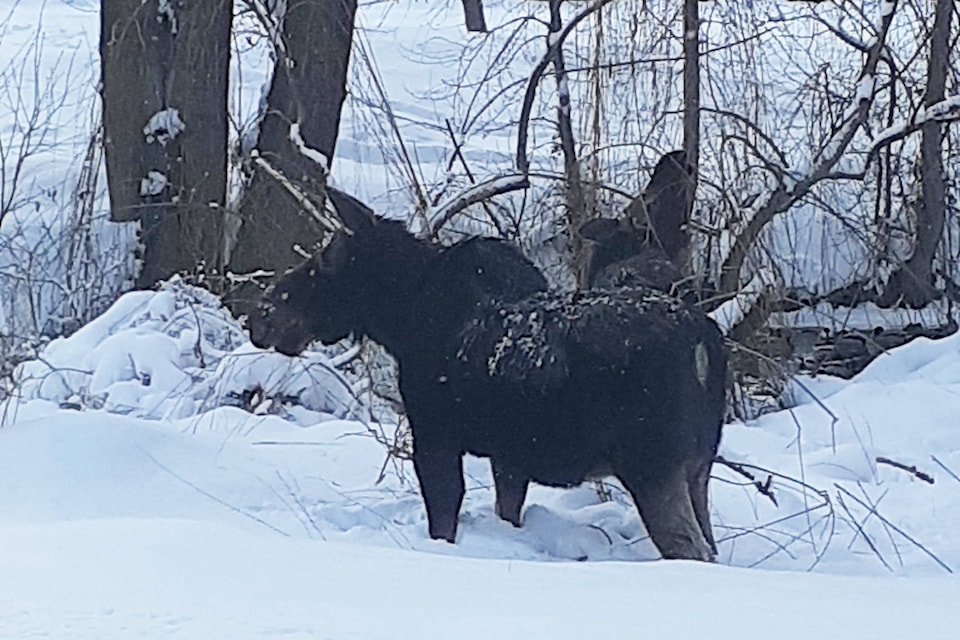Many Salmon Arm residents are noticing an influx of wildlife visiting their neighbourhoods as a deep snow makes the inhabited valley bottoms more inviting than the mountains.
Of particular interest to residents have been the moose seen at the local college campus and in residential areas looking for food.
Although the large animals are an obvious magnet for curiosity, local conservation officers say they must be treated with respect.
Read More: Have a say on spending of tax dollars in the Columbia Shuswap Regional District
Tanner Beck, one of the conservation officers serving the North Okanagan zone, said deep snow forces moose as well as other ungulates into the valley bottom.
Micah Kneller, another North Okanagan conservation officer, said food is also more plentiful in populated areas and shrubs planted in people’s yards can be an attractive meal for the moose this time of year.
Read More: Doctors dispute need for Salmon Arm urgent and primary care centre
Read More: Okanagan among Canada’s most at-risk habitats: WWF report
Beck said it is important that anyone who sees a moose in their neighbourhood should not approach it. Winter is already a stressful time for the animals and close encounters with people will only add to the stress, he said. A defensive reaction on the part of the moose is also a possibility if people get too close.
Kneller said cow moose and their calves in particular should be avoided as mother moose are known to aggressively protect their young.
jim.elliot@saobserver.net
Like us on Facebook and follow us on Twitter
